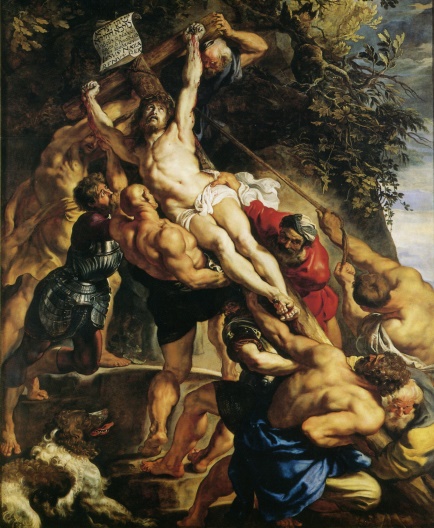
Title: The Raising of the Cross.
Author: Peter Paul Rubens;
Medium: Oil Paint;
Size: 15’2″ × 11’2″;
Date: 1610-1611;
(Getlein 393).
(Rubens).
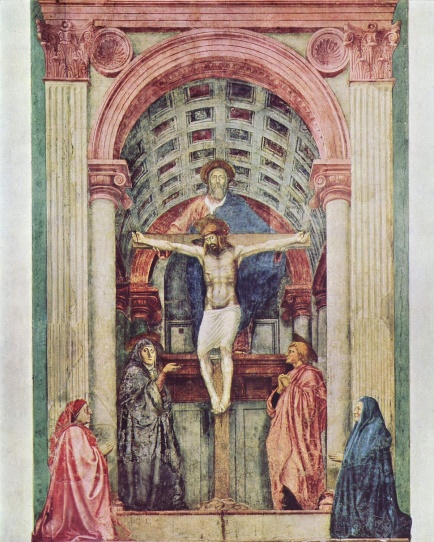
Title: Trinity with the Virgin, Saint John the Evangelist, and Donors.
Author: Masaccio Fresco.
Size: 21’9″ × 9’4″.
Date: 1425.
(Getlein 368).
(Masaccio).
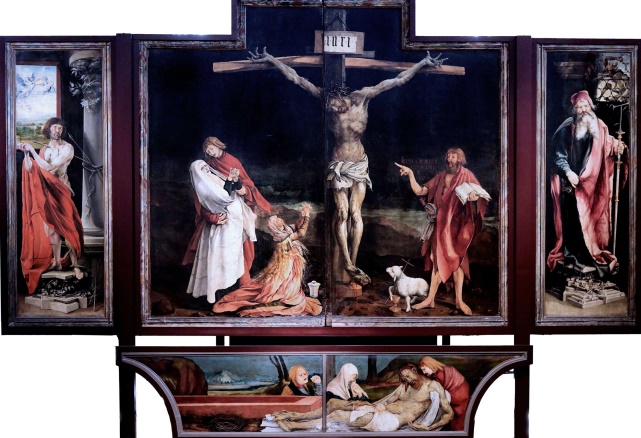
Title: Isenheim Altarpiece.
Author: Matthias Grünewald Panel.
Size: 8’10” × 10’1″.
Date: 1515.
(Getlein 382).
(Grünewald).
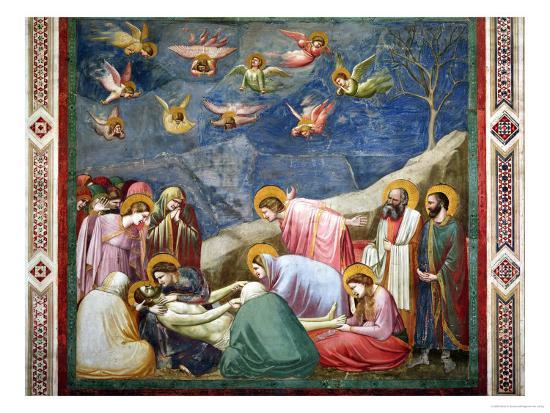
Title: The Lamentation.
Author: Giotto di Bondone Fresco.
Date: 1303-1305.
Size: 6’63/4” × 6′3/4“.
(Getlein 364).
(Giotto).
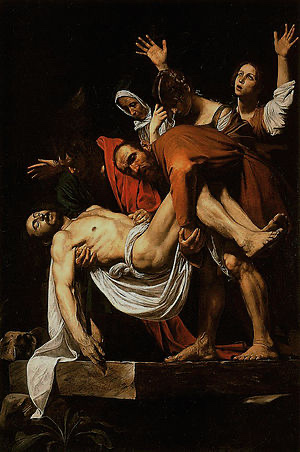
Title: Entombment of Christ.
Author: Caravaggio.
Medium: Oil on canvas.
Size: 9’91⁄8″ × 6’73⁄4“.
Date: 1604.
(Getlein 391).
(Caravaggio).
Curatorial Statement
The title of the exhibition is Christian Sorrow: Panorama of the Crucifixion of Jesus. The title fully reflects the essence of the show and its principal theme. The image of Jesus Christ has always been the sacred center of Christian ideas about good and righteous life. Jesus was arrested and tried, then unfairly sentenced to be scourged and crucified. His death is considered an enormous sacrifice for the sins of humanity. Good Friday, the day of Christ’s execution, is still the gloomiest day of the year for thousands of believers in different countries. A visit to this exhibition will allow seeing the crucifixion and burial of Christ through the eyes of the greatest artists in the world.
Therefore, its primary aim is not only to remind visitors once again that Jesus suffered for all Christians and make them think about the strength of his spirit and love for people. The exhibition also strives to show people the immense sacrifice of Christ as the artists imagined it hundreds of years ago, thereby allowing comparing and even more profoundly learning the essence of Christian history.
The exhibition includes five pieces of art, which gradually show the scene of Christ’s execution and his subsequent burial. These masterpieces were created in various historical epochs and different countries, but they are united by theme, depicted figure, and mood. The first artwork, Ruben’s painting The Raising of Cross, seems to turn its viewers into witnesses of the crucifixion. The works Trinity with the Virgin, St John the Evangelist, and Donors by Masaccio and Isenheim Altarpiece by Grünewald show already crucified Christ. Grünewald’s masterpiece presents “the horrible appearance of Christ’s body – bleeding from numberless wounds, tortured beyond endurance” (Getlein 382).
The painting by Giotto, The Lamentation, which depicts mourning the dead Christ, “has been composed as though it were on a stage and we the viewers are an audience participating in the drama” (Getlein 364). Caravaggio’s artwork Entombment of Christ depicts people “from the picture plane, but their actions are contained on four sides within the frame of the canvas” (Getlein 393). All these artworks are visually and conceptually connected; therefore, their combination lets visitors of the exhibition discover this episode of Christian history from all sides.
The chosen artworks portray scenes of the crucifixion, mourning, and burial of Christ, allowing visitors to fully immerse themselves in the depicted events and feel the pain of all Christians. Since figures in the paintings seem to be alive, the audience can feel like a part of what is happening, which strengthens the conviction that everything was exactly like that in reality. The works presented at the exhibition must be seen in order to understand how strong the all-forgiving love of God for the faithful can be. These masterpieces make people think that since Jesus died for them, they must try hard so that his sacrifice is not in vain. Therefore, the exhibition Christian Sorrow: Panorama of the Crucifixion of Jesus is waiting for the first visitors to show them the saddest scenes of Jesus’s life, who suffered due to his immense love for people.
Works Cited
Caravaggio, Michelangelo. The Entombment of Christ. 1603. Pinacoteca of the Vatican Museum, Vatican city. The Artinspector. Web.
Getlein, Mark. Living with Art. 11th ed. McGraw-Hill, 2016.
Giotto, di Bondone. The Lamentation (The Mourning of Christ). 1304-1306. Scrovegni Chapel, Padua. Thirty-Two Minutes. Web.
Grünewald, Matthias. Isenheim Altarpiece. 1516. The Unterlinden Museum, Colmar. Annenberg Learner. Web.
Masaccio. Trinity with the Virgin, Saint John the Evangelist, and Donors. 1425. Santa Maria Novella, Florence. Artsy. Web.
Rubens, Paul. The Raising of the Cross. 1610. The Cathedral of Our Lady, Antwerp. Artsy. Web.